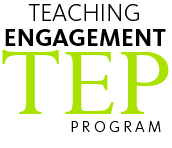Many large classes on UO’s campus have developed undergraduate “near peer” teaching assistants to help make their big class feel a bit smaller. In most cases, these teaching assistants have taken the course the year or two before, having the benefit of experience in both the logistics and content of the course. Most faculty I have talked to have created their teaching assistant program from scratch, each of us separately re-creating the wheel. But there are formal, research-backed, programs that provide a framework for near peer assistants – for example – the Learning Assistant Alliance which started at the University of Colorado, Boulder.
On May 20th 2016 Oregon State University ran a Regional Learning Assistant Workshop, and a team from the Department Human Physiology attended. We currently have a large group of teaching assistants (over 115 students participated in different teaching assistant roles in multiple classes this year) and we are interested in developing a more official learning assistant program.
The Learning Assistant model includes a three pronged approach: Practice, Content and Pedagogy, meaning our near-peer learning assistants should be simultaneously learning about evidence-based pedagogy, learning more about specific course content, and practicing their knowledge of pedagogy in the classroom. Learning Assistants are not graders, and they are not Supplement Instructors, but they do play an active role in the large class and help to improve the student to teacher ratio!
We had a chance to talk to the OSU learning assistants, and watch them in action during a large class (~400 students) taught in OSU’s completely round classroom. They were each assigned a small section of the class where they answered students questions while students spent the 50-minute class period doing a POGIL worksheet. The classroom was alive with students interacting with one another and the teaching team. I tried, and failed, to find a student off-task (even those using their phones & computers).
If you are interested in learning more, create a login (free) on the Learning Assistant Alliance website to gain access to their resources. The 2016 International Learning Assistant Workshop will be at the University of Colorado Boulder, on Oct. 23-25, 2016.



Recent Comments